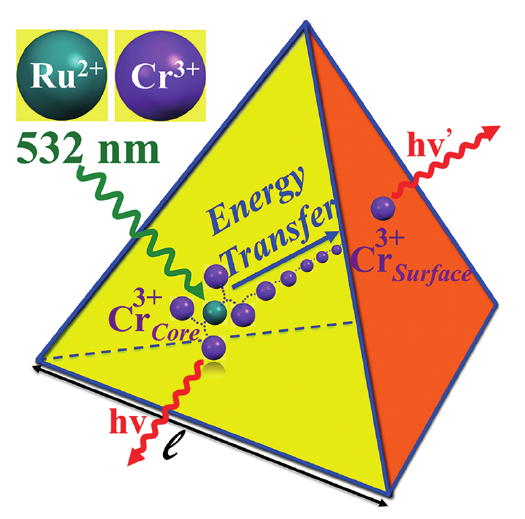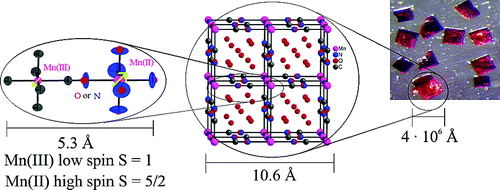-
Directional Energy Transfer in Nanocrystals of [Ru(2,2'-bipyridine)3][NaCr(oxalate)3]
E. Previtera, A. Tissot and A. Hauser
European Journal of Inorganic Chemistry, 2016 (13-14) (2016), p1972-1979


DOI:10.1002/ejic.201501204 | unige:83821 | Abstract | Article HTML | Article PDF | Supporting Info

Size-controlled nanocrystals (140 nm and 670 nm) and microcrystals (2.5 mm) of the three-dimensional oxalate network [Ru(bpy)3][NaCr(ox)3], ox = oxalate, bpy = 2,2’-bipyridine, were prepared by the reverse micelle technique. The photo-physical properties of the [Cr(ox)3]3- chromophores in the nanocrystals at low temperatures are significantly different from those of the same chromophore in 4 mm crystallites prepared by fast precipitation. For the latter, the absorption in the region of the R lines of the 4A2 → 2E transition is characterized by a sharp doublet. For the nanocrystals the inhomogeneous broadening of the two lines is considerably larger with tails on the low-energy side. Whereas the 4 mm crystallites at low temperatures just show equally sharp emission from the R1 line, the emission intensity from the nanocrystallites is shifted into the low-energy tail. Time resolved fluorescence line narrowing spectra and luminescence decay curves demonstrate that this is due to efficient directional energy migration from the center of the nanocrystals towards the surface





